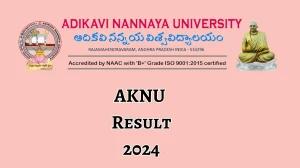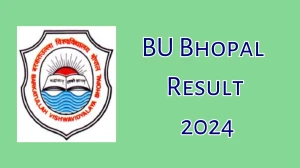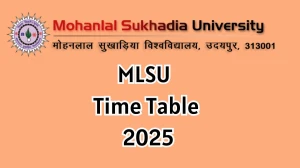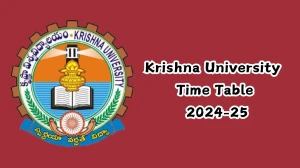- Rojgarlive »
- Education »
- WBCHSE Class 12 Physics Syllabus 2024-25 @ wbchse.wb.gov.in Check and Download Here
WBCHSE Class 12 Physics Syllabus 2024-25 @ wbchse.wb.gov.in Check and Download Here
by Keerthika
Updated Jul 09, 2024
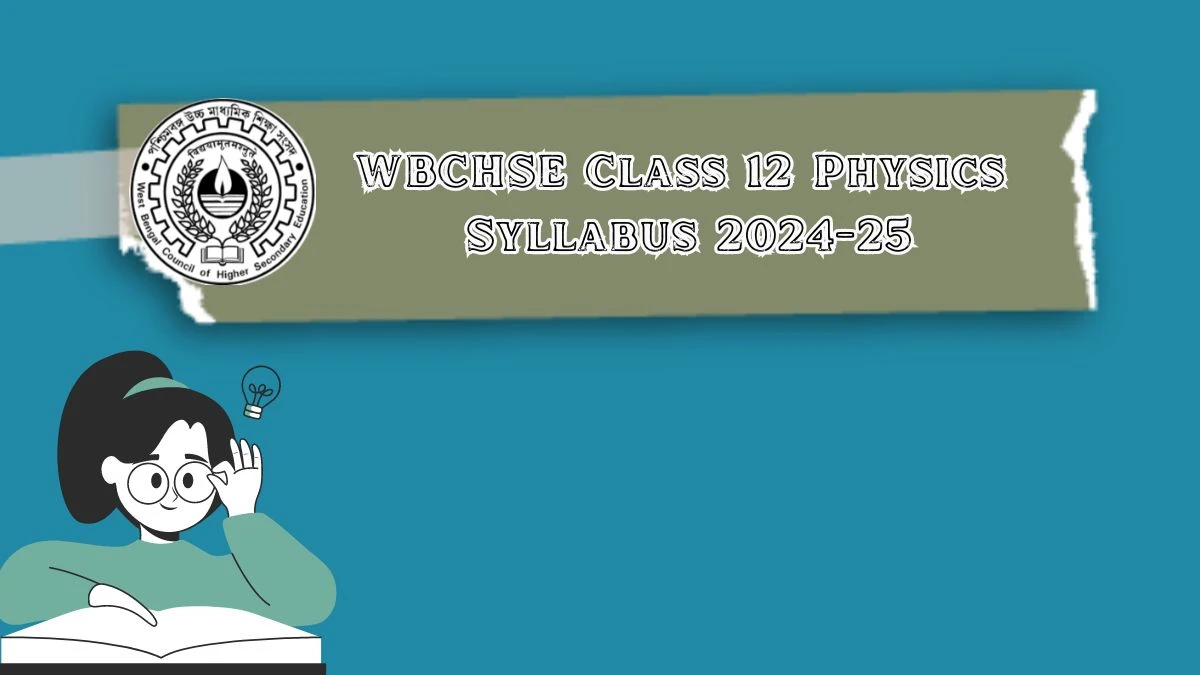
WBCHSE Class 12 Physics Syllabus 2024-25 @ wbchse.wb.gov.in
The West Bengal Board has released the latest curriculum and syllabus for Class 12 students. This article provides a free PDF link to download the Physics syllabus, which is a core subject for Class 12 students. The subject aims to develop skills in listening, speaking, reading, and writing with an emphasis on grammar and comprehension. It includes specific competencies and is assessed through a total of 100 marks, divided between theory and project work. Read the complete article to access the WB Board Class 12 Physics curriculum and syllabus for the academic year 2024-24.
Check - WBCHSE Class 12 Physics Syllabus 2024-25
Semester- III
|
UNIT No. |
TOPICS |
MARKS |
|
1 |
ELECTROSTATICS SUB TOPICS: ELECTRIC CHARGES AND FIELDS Electric charges, conservation of charge. Coulomb's law - force between two point charges, forces between multiple charges, superposition principle and continuous uniform distribution of charges. Electric field: electric field due to a point charge, electric field lines. Electric dipole, electric field due to a dipole (at a point on its axis, at a point on its perpendicular bisector, at any point), torque on a dipole in uniform electric field. Electric flux, statement of Gauss's theorem and its application to find the field due to infinitely long straight wire, uniformly charged infinite plane sheet and uniformly charged thin spherical shell (field inside and outside) SUB TOPICS: ELECTROSTATIC POTENTIAL AND CAPACITANCE Electric potential, potential difference, relation between electric field intensity and potential, electric potential : due to a point charge, a dipole and system of point charges, equipotential surface and its properties, electrical potential - energy of a system of two point charges and of electric dipole in electrostatic field. Conductors and insulators, free charges and bound charges inside a conductor. Dielectrics and electric polarization. Capacitors and capacitance, combination of capacitors in series and in parallel. Capacitance of parallel plate capacitors with or without dielectric medium between the plates. Capacitances of solid and hollow spherical capacitors. Energy stored in a capacitor. Example of capacitors in our daily life (only qualitative idea ). |
8 |
|
2 |
CURRENT ELECTRICITY Electric current, flow of electric charge in a metallic conductor. Drift velocity, mobility and their relation with electric current. Ohm's law, electrical resistance, resistivity and conductivity. V-I characteristics for ohmic resistance, temperature dependence of resistance. Series, parallel and mixed grouping of resistances. Internal resistance of a cell, potential difference and emf of a cell, combination of cells in series and in parallel and in mixed grouping. Parallel combination of two cells of unequal emfs, series combination of n cells of unequal emfs. Kirchhoff's law and simple applications. Wheatstone bridge principle, Metre Bridge principle (end error correction not required). Potentiometer: principle and its applications to measure the potential difference and for comparing emfs of two cells and measurement of internal resistance of a cell. |
8 |
|
3 |
MAGNETIC EFFECTS OF CURRENT AND MAGNETISM SUB TOPICS: MOVING CHARGE AND MAGNETIC FIELD Concept of magnetic field, Oersted's experiment. Biot - Savart law, calculation of magnetic field for linear and circular current carrying conductors and its simple applications. Ampere's circuital law and its application to infinitely long straight wire and straight solenoid. Force on a moving charge in a uniform magnetic and electric fields - Lorentz force. Motion of a charged particle in a perpendicular magnetic field (Cyclotron frequency). Force on a current carrying conductor in a uniform magnetic field. Force between two parallel current carrying conductors - definition of ampere. Torque experienced by a current carrying loop in uniform magnetic field, moving coil galvanometer -its current sensitivity. Conversion of galvanometer into ammeter and voltmeter. SUB TOPICS: MAGNETISM AND MATTER Current loop as a magnetic dipole and its magnetic dipole moment. Magnetic dipole moment of a revolving electron. Magnetic field intensity due to a magnetic dipole (bar magnet) along its axis and perpendicular to its axis. Torque on a magnetic dipole (bar magnet) in a uniform magnetic field, magnetic field lines. Magnetic properties of a material: magnetic permeability, magnetic susceptibility, intensity of magnetization, magnetic retentivity and coercivity. Hysteresis: B - H loop and its significance, (only qualitative idea) Earth's magnetic field and magnetic elements. Dia, Para and Ferro - magnetic substances with examples. Electromagnets and factor affecting their strengths. |
8 |
|
4 |
ELECTROMAGNETIC INDUCTION AND ALTERNATING CURRENT SUB TOPICS : ELECTROMAGNETIC INDUCTION Electromagnetic induction, concept of magnetic flux. Faraday's laws, induced emf and current, Lenz's law, Eddy current. Concept of self and mutual inductance, self-inductance of a solenoid and mutual inductance of two coaxial solenoids (qualitative ideas). SUB TOPICS : ALTERNATING CURRENT Alternating current, peak and RMS values of alternating current/voltage, reactance and impedance. Concept of phasor diagram, only resistive circuit, only inductive circuit , only capacitive circuit, LR circuit, CR circuit, and LCR series circuit, resonance, LC oscillator (qualitative idea only). Power in AC circuit, power factor in AC circuit, wattless current. AC generator and transformer. |
8 |
|
5 |
ELECTROMAGNETIC WAVES Basic idea of displacement current, electromagnetic waves and their characteristics (qualitative ideas only). Transverse nature of electromagnetic waves. Electromagnetic spectrum (radio waves, infrared, visible, ultraviolet, X-rays, Gamma Rays) including elementary facts about their uses. |
3 |
Semester- IV
|
UNIT No. |
TOPICS |
MARKS |
|
6 |
OPTICS SUB TOPICS : RAY OPTICS AND OPTCAL INSTRUMENTS Reflection of light, spherical mirrors, mirror formula, refraction of light, total internal reflection and its applications, optical fibers. Refraction at spherical surfaces, lenses, thin lens formula. Lens -Maker's Formula. Displacement method to find the position of image (conjugate points), magnification power of a lens. Combination of thin lenses in contact, combination of lens and mirrors. Refraction and dispersion of light through a Prism. Scattering of light - blue colour of the sky and reddish appearance of the sun at sunrise and sunset. Optical instruments: human eye, image formation and accommodation, correction of eye defects (myopia and hypermetropia) only qualitative Ideas. Microscopes and astronomical telescopes (reflecting and refracting) and their magnifying powers. SUB TOPICS : WAVE OPTICS Wave front and Huygens' principle, reflection and refraction of plane wave at a plane surface using Huygens' principle. Interference: interference of monochromatic light by double slits –Young’s experiment, conditions for sustained interference of light - coherent sources, condition of maxima and minima in the term of path difference and phase difference, expression for the fringe width. Diffraction: Fraunhoffer's diffraction due to single slit, width of central maximum. Resolving power of microscope and astronomical telescope. Polarization, plane polarized light. Brewster's law, uses of plane polarized light and polaroid. |
14 |
|
7 |
DUAL NATURE OF RADIATION AND MATTER Dual nature of radiation. Photoelectric effect. Hertz and Lenard's observations, Einstein's Photoelectric equation - particle nature of light. Matter waves - wave nature of particles, de Broglie relation and its simple applications. |
4 |
|
8 |
ATOMS AND NUCLEI SUB TOPICS: ATOMS Alpha - particle scattering experiment, Rutherford's model of atom, Bohr model of hydrogen like atoms, energy levels, hydrogen spectrum. Elementary theory of X -ray production, continuous and characteristic X-ray(their origin and properties only),Moseley's law. SUB TOPICS : NUCLEI Composition and size of nucleus, atomic mass, isotope, isobar, isotone. Radioactivity: alpha, beta and gamma particles / rays and their properties, radioactive decay law. Mass - energy relation, mass defect, binding energy per nucleon and its variation with mass number, Nuclear fission and fusion. |
6 |
|
9 |
ELETRONIC DEVICES Thermal emission of electrons and only the basic concepts of vacuum diode and triodes. Energy bands in solids: conductors, insulators and semiconductors ( qualitative idea only) Intrinsic and extrinsic semiconductors, band diagram. P- N junction diode, forward and reverse bias, I - V characteristics of junction diode (nonlinear concept). Special type of diodes: LED, photodiode, solar cell and Zener diode with their characteristics. Zener diode as a voltage regulator. Junction transistor, npn and pnp transistor, transistor action, characteristics of a transistor, transistor as an amplifier (common emitter configuration). Transistor as a switch. Elementary idea of analogue and digital signals. Concepts of decimal and binary numbers. Logic gates : OR,AND,NOT,NAND,NOR (Symbols, input, output Boolean equations, truth table, qualitative explanation). Simple cases of combination of gates |
8 |
|
10 |
COMMUNICATION SYSTEM Elements of a communication system (Block diagram only), concepts of amplitude and frequency modulation. Band width of signals (speech, TV and digital data). Band width of transmission medium. Propagation of electromagnetic waves in the atmosphere, sky wave and space wave propagation (qualitative idea only). |
3 |
WBCHSE Class 12 Physics Syllabus 2024-25? -FAQ
The Class 12 Physics syllabus includes topics such as Mechanics, Electromagnetism, Optics, Modern Physics, and Thermodynamics. It also covers practical experiments and project work.
The Physics subject is evaluated through a total of 100 marks, which are divided between theory (70 marks) and practical/project work (30 marks).
